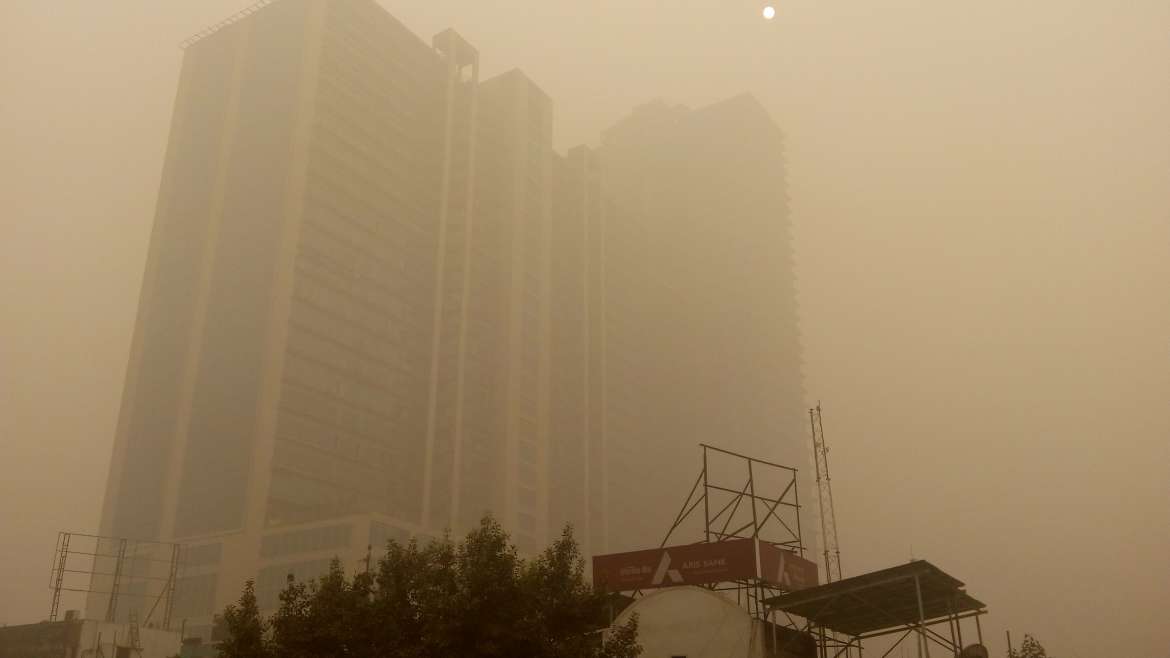The air quality in Delhi, the capital of India, according to a WHO survey of 1600 world cities, is the worst of any major city in the world. Air pollution in India is estimated to kill 1.5 million people every year; it is the fifth largest killer in India. India has the world’s highest death rate from chronic respiratory diseases and asthma, according to the WHO. In Delhi, poor quality air irreversibly damages the lungs of 2.2 million or 50 percent of all children.
India’s Ministry of Earth Sciences published a research paper in October 2018 attributing almost 41% of PM2.5 air pollution in Delhi to vehicular emissions, 21.5% to dust and 18% to industries. The director of Centre for Science and Environment (CSE) alleged that the Society of Indian Automobile Manufacturers (SIAM) is lobbying “against the report” because it is “inconvenient” to the automobile industry.
Air quality index of Delhi is generally Moderate (101-200) level between January to September, and then it drastically deteriorates to Very Poor (301-400), Severe (401-500) or Hazardous (500+) levels in three months between October to December, due to various factors including stubble burning, road dust,vehicle pollution and cold weather. In November 2017, in an event known as the Great smog of Delhi, the air pollution spiked far beyond acceptable levels. Levels of PM2.5 and PM 10 particulate matter hit 999 micrograms per cubic meter, while the safe limits for those pollutants are 60 and 100 respectively.
Causes of poor air quality
- Lack of active monitoring and reaction by authorities.
- Overpopulation
- Lack of political priority.
- Motor vehicle emissions are one of the causes of poor air quality. Other causes include wood-burning fires, fires on agricultural land, exhaust from diesel generators, dust from construction sites, burning garbage and illegal industrial activities in Delhi.
- The Badarpur Thermal Power Station, a coal-fired power plant built in 1973, is another major source of air pollution in Delhi. Despite producing less than 8% of the city’s electric power, it produces 80 to 90% of the particulate matterpollution from the electric power sector in Delhi. During the Great smog of Delhi in November 2017, the Badarpur Power Plant was temporarily shut down to alleviate the acute air pollution, but was allowed to restart on 1 February 2018. In view of the detrimental effect to the environment, the power plant has been permanently shut down since 15 October 2018
- The drift/mist emissions from the wet cooling towersis also a source of particulate matter as they are widely used in industry and other sectors for dissipating heat in cooling systems.
- Although Delhi is kerosene free and 90% of the households use LPGfor cooking, the remaining 10% uses wood, crop residue, cow dung, and coal for cooking. (Census-India, 2011)
- Fire in Bhalswalandfill is a major reason for airborne particles in Delhi.
- Agricultural stubble burningalso affects Delhi’s air quality when crops are being harvested.
- Heavy metal rich fire-crackers
Effects of poor air quality
Effects on children
2.2 million children in Delhi have irreversible lung damage due to the poor quality of the air. In addition, research shows that pollution can lower children’s immune system and increase the risks of cancer, epilepsy, diabetes and even adult-onset diseases like multiple sclerosis.
Effects on adults
Poor air quality is a cause of reduced lung capacity, headaches, sore throats, coughs, fatigue, lung cancer, and early death.

